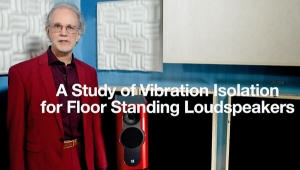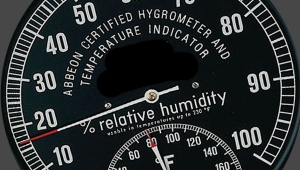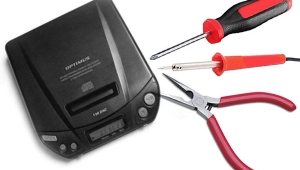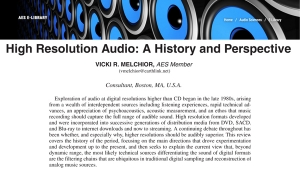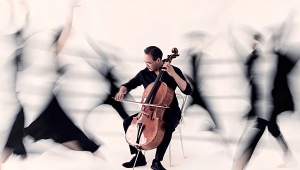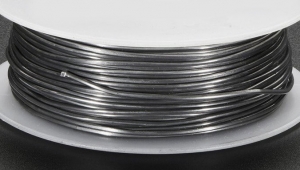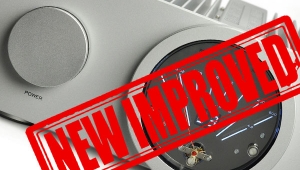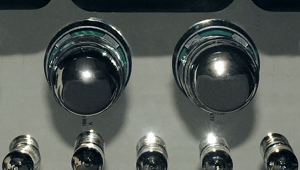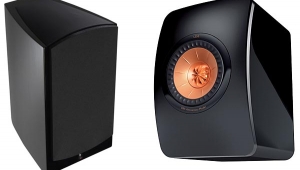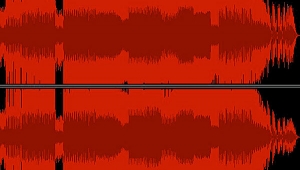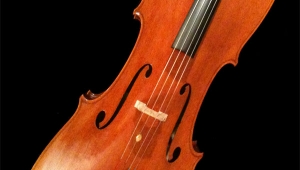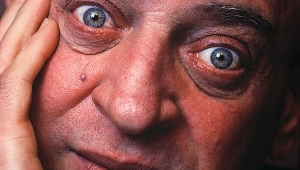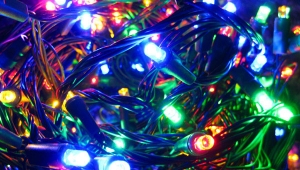| Columns Retired Columns & Blogs |
Auditions, the Audio Press, & Neo-fatalism Page 2
If you shivered at the words "degraded and distorted," then you're a member of the True Church of Audiophilia. Music itself, in all its undistorted purity, looms as a remote, immaterial god. Try as we may, we'll never fully reproduce it in our listening rooms. We've fallen, cursed with original distortion. Music is good, equipment is evil. Your D/A converter, your amp, speakers, and cables—they're all just expensive distortion-introducing devices. Some are better than others, of course, but none are completely benign.
Footnote 4: This reminds me of Brian Eno's experiments with tape loops of recorded traffic noise, which he manipulated as a musical signal.
We've all seen this logic run amok, and it's not pretty. The worst cases can't even listen to one song without moving speakers, adjusting the listening chair, or changing cables to eliminate all possible interference. Live performances also become ceremonies where the devil must be fended off: every off-center seat is less than optimal; every balcony, wall, and baroque cornice is the source of a music-damaging reflection. Even the musicians can foul things up. They might hum and sing along (Glenn Gould, Keith Jarrett), or play too hard (Yo-Yo Ma). Think of Dana Carvey's church lady: "Couldn't he just play his little tune and not have to grunt and sweat like that?!"
Like any good religion, the audiophile faith is built around a paradox—the paradox of perfect equipment. As Valin puts it, the ideally "neutral" component would reveal that first, uncorrupted, "neutral" sound. It would: "provide a pellucid window on the music, showing us the true colors and textures of instruments without showing any colors or textures of its own."
The paradox is not that such ideally neutral components don't exist, but that the very idea of them makes no sense. Equipment that performs as if it's not there, that processes signals without altering them in any way, is not perfect—it's either broken, turned off, or (like one hand clapping) the subject of a Zen koan. These are the logical gymnastics of a mystical theology. Its goal is to attain union with [cue: heavenly choir] Music Itself.
How is this possible? With the perfect listening session! If you had equipment like this, there would be no noise, no compression, no room/speaker interactions, no impedance mismatches, no distortions of any worldly kind—only a lossless, mainline, superconducting transfer of musical bliss straight from performer to listener. It does have its appeal, I admit. But I always like to know someone a little better before doing that.
Can we avoid this paradox? Yes—just follow Wittgenstein and realize that music, like language, is everywhere inside the world (footnote 4). It doesn't come from beyond, only to get scuffed up by squeezing through concert halls, microphones, and speakers. In fact, from this perspective, music doesn't travel or move at all. An orchestra's sound doesn't "pass through" a concert hall to become altered and stamped with its acoustic signature. Instead, an orchestra creates sound right there, and it gets heard and enjoyed right there.
And sorry, Virginia, but there is no such thing as "music itself." If it did exist, it would be musical sound before it was corrupted and changed by the acoustics of a concert hall, recording studio, bathtub, or wherever. But sound only exists in a place, in some acoustic environment. Only with a heaping dose of imagination and abstraction can we speak of musical sound all by itself, without the effects of any acoustic space at all. In this regard, sound is a lot like color. I sometimes ask my students, "Is there color in the dark? What happens to this yellow pad if there's no light?" Someone always takes the bait: "Duh. Of course there's color in the dark. You just can't see it."
Bzzzzzzt. Incorrect (footnote 5). Like "sound," "color" is best understood as a verb: It exists when it colors light; sound exists when it sounds in some place, not before.
Fortunately, even though there's no sacred, undistorted sound at the end of the rainbow, there's still lots and lots of music. From this perspective, music is not a thing or a delicate object, but an event. Since each event is unique, each can be enjoyed simply for what it is. There's no need to compare each musical experience with some other experience, to wish you had a better seat, weren't sitting behind a large, acoustically menacing hat, or could somehow be "closer" to the "music itself."
For audiophiles, the differences between these two approaches can be drastic. First, equipment is no longer evil. Components don't subtract from the original purity of the music, they act positively. Instead of trying to reproduce the original event (and always failing), they allow new and different events to occur—different venues (your listening room); different volume levels (of your choosing); different times (right after your evening bath); and different audiences (so you don't have to share your listening seat—especially right after a bath—with a thousand patrons of the Berlin Philharmonic). Instead of working against the music, equipment works for you. And since the second event is so different from the first, it should sound different in your living room. So when it does, don't be surprised, and don't despair.
I'm not a cranky old audiophile—really. It's just that the conventional wisdom looks upside-down to me. Everyone says the point of playing recordings at home is to hear the same music or the same sounds the audience or performers heard. Language fools us into thinking this is possible. The sounds don't remain the same; only the words do. You might say, "I heard these sounds in concert; I recorded them; and now I'm playing back these sounds on my home system." But your listening room just won't be filled with the same sounds. That can happen only in science fiction—on Star Trek's holodeck, for instance (footnote 6). That's where components can be perfect, where they can turn your room into a jazz club or concert hall and still disappear without sonic trace.
"Mom, Reisch is being a neo-fatalist again!"
No, I'm not saying you should surrender to distortion, that every playback is hopelessly corrupted, or that a rack system will do just as well as a $50,000 rig. It's sensible to optimize your system, just as it's sensible to prefer row M to row W, tubes to solid-state (misguided though that may be), or CD to LP (if you're a little hard of hearing). But it doesn't make sense to think of components as conduits to some pure, uncorrupted, otherworldly music. This is the real path to fatalism, because it sets us up for goals we can't reach—like the "perfect" listening session. For some, it leads to Audiophilia nervosa; others just give up on audio altogether. Everyone knows at least one ex-audiophile who got too dizzy or broke riding the upgrade spiral, and had to jump off. For them, the equipment was never good enough. It could never bring home [cue: heavenly choir] The Music Itself.
In this regard, the audio press deserves a gold star (daring claim there). As often as we drift into never-never land writing about the sublime delights of the best equipment, most reviewers and editors use just the right word to keep imagination and the illusions of language at bay: audition, audition, audition!
Wittgenstein would approve. Whereof one cannot speak, thereof one must be silent...and listen to the music.
Footnote 4: This reminds me of Brian Eno's experiments with tape loops of recorded traffic noise, which he manipulated as a musical signal.
Footnote 5: This is not, by the way, a version of the old question about the tree falling in the forest. Nor am I claiming that objects in darkness lose the molecular properties that cause them to absorb and reflect particular wavelengths of light.
Footnote 6: There. My obligatory mention of Star Trek.
- Log in or register to post comments
